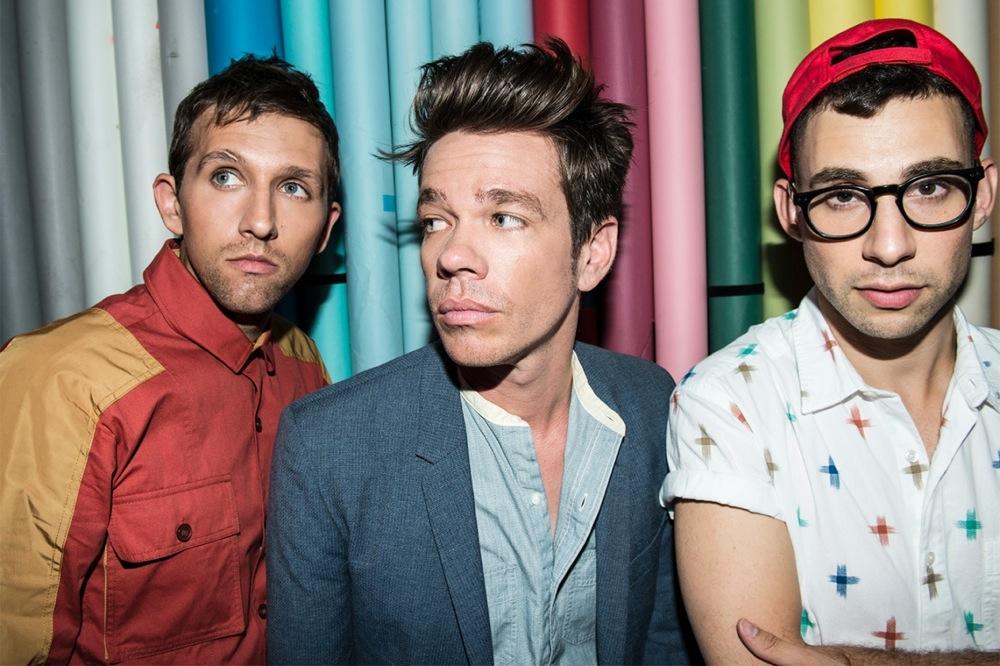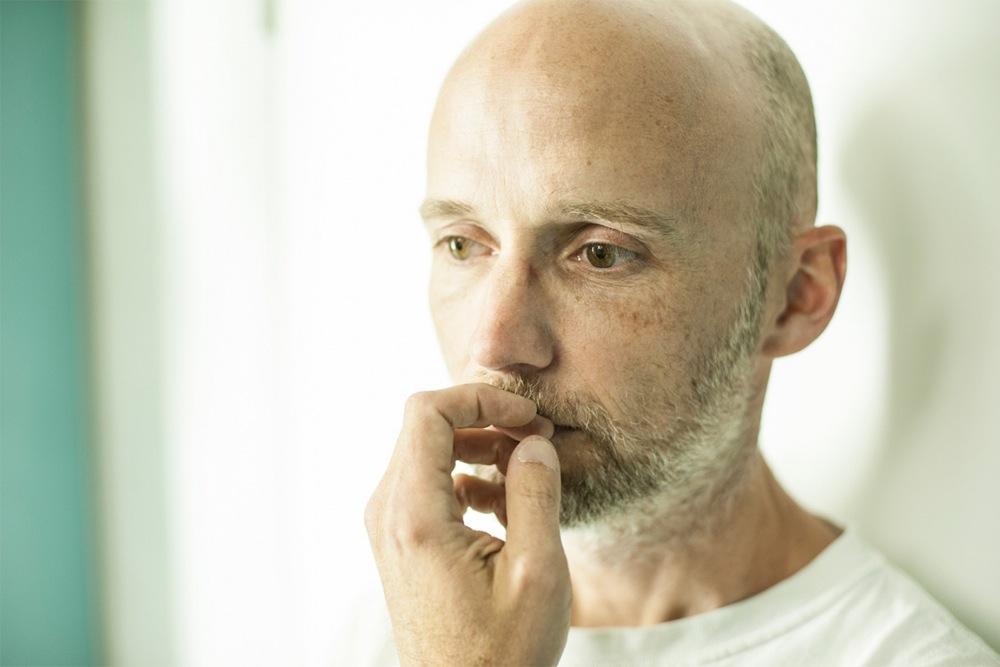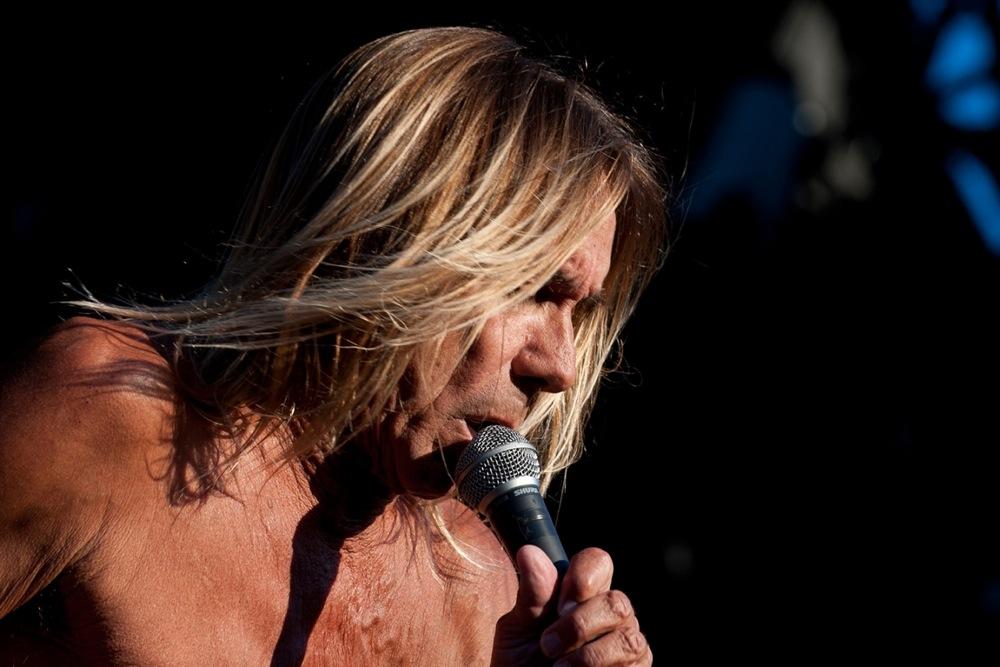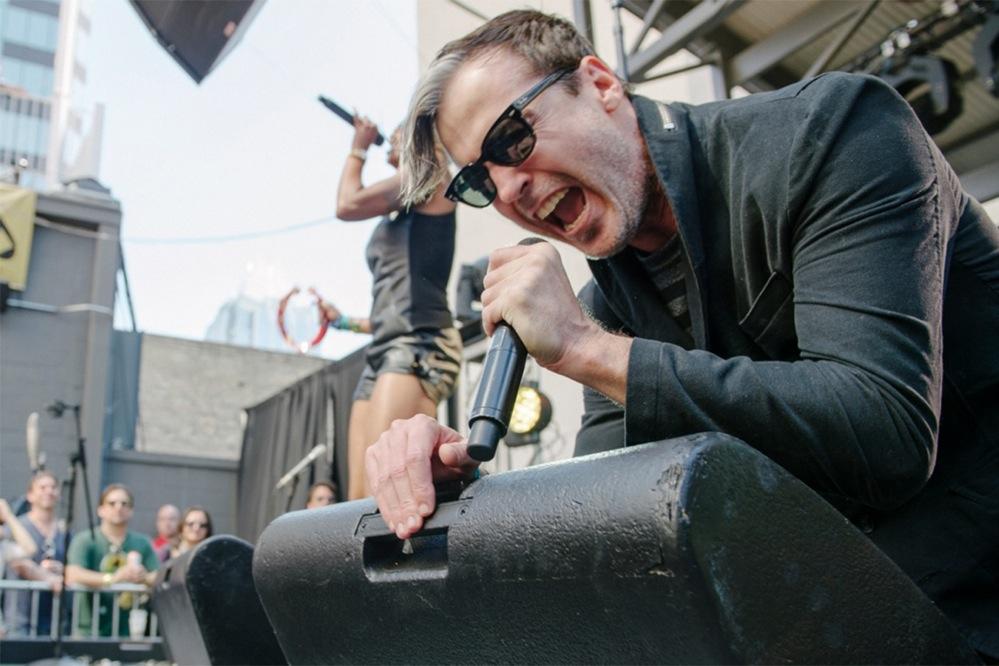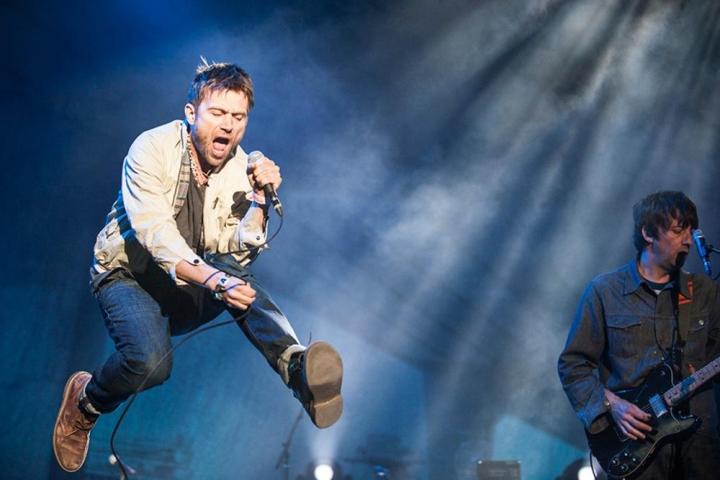
Despite shooting for the likes of Rolling Stone, Spin, Billboard, Kerrang, and Alternative Press – and be asked to do personal shoots for “it” bands like Fun – Los Angeles-based music photographer Lindsey Byrnes still considers herself an “up-and-coming” artist in her field. But that’s just part of her drive to continue learning, to continue improving herself over the course of a career that is undoubtedly on the rise.
Whether she is trying to boil a band down to its visual essence in portrait-esque shoots or overcoming challenges to capture the all-important moment of a live performance, Byrnes has found a niche in which she excels, with her photos becoming increasingly coveted in the industry. Byrnes took some time out of her busy schedule to talk to us about how she got started with rock music photography and the secrets to getting an awesome live shot.
What got you into photography?
I was working at a skateboard magazine. I was a marketing director, and I was kind of obsessed with skateboard photographers, but I knew that wasn’t really my thing – action shots. Skateboard photography is athletic photography. There’s very specific things, as a skateboard photographer, you need to know. Being a skateboarder helps with the tricks and stuff like that. I knew that wasn’t my calling, but I was really obsessed with the photographers and the imagery. I was like, “This is something I really want to do.”

I had an opportunity to go and shoot some live music while I was working there, and I just got hooked. I was like, “This is really great.” And then I took some classes while I was working there. I think I got published and I was like, “Oh my god!” Seeing the photos that I took in magazine form – I’ve always been a big print person. I worked in publishing for 10 years. I was there when we were going from film to digital. I was there watching the transformation from doing physical paste up to digitizing the magazine itself. So I learned to shoot with film and then was really involved in the process to switch over to digital.
What was it about music photography that hooked you?
What it was that hooked me to the music stuff was the connection that I felt when I was there. I think, in this day and age, with everyone with their cell phones and things like that, people think that they’re not enjoying the moment. Musicians are like, “‘Put your phones down!” But for me, it was three songs – when you first go and shoot shows, they only allow you to shoot three songs. And also, I think that I was good at it. These images that I was getting back, I loved and I was proud of. I loved the music.
Do you remember the first concert you shot?
I do remember. The first show I specifically went to shoot was The Vines at The Warfield. I obtained a photo pass. I brought a bunch of film, and we were going to do an interview. It was so crazy, because they were like, “No flash,” and I had to learn real quickly how to shoot in no light. It was so challenging. And I got the photos back, and only like three images showed up, but those three images were awesome. But I cried [to a photographer friend], “I can’t believe it. I’m so disappointed.” He was like, “You’re lucky if you got one shot. Keep going.” I had other people encouraging me along the way. I still have a postcard from another photographer I really admired. I had sent him some pictures and he’s like, “You should think about doing this.” I said, “Ha ha, sure.” But that moment where he was like, “You’re lucky if you shoot eight rolls of film in low light and get back something that you like and that you can use.” So I was like, “OK, maybe I’m not that bad.”

I’m the kind of photographer that the mistakes sometimes end up being the best stuff.
I think there’s always early mistakes. I also think I’m the kind of photographer that the mistakes sometimes end up being the best stuff. That’s what I love – the photography of a person who is consistently making mistakes in life. I finally found that sometimes what isn’t intended, turns out to be the best stuff, which can be awfully frustrating. I call them happy mistakes – those in-between moments. You just learn along the way. I’m also height-challenged. I’m 5-foot-1, which, as somebody who shoots live music, that can be a really big challenge. That can also be to my advantage, if I’m really trying to get up there. If I’m granted extra access, it’s an advantage because I’m not such a presence that people are going to be looking at me and not looking at the band. I can sneak around because I’m short. But it can also present a lot of challenges, and that’s something I can try to combat by bringing a little stool or something like that, if I’m granted extra access. When you have three songs, you have what you’re working with. Sometimes my inhibitions, my want to not get in the way of somebody’s performance, has missed me some shots. I think sometimes I’m a little too conscious of that, whereas I see some photographers really just get up there.

As you mentioned, when you’re starting, you get those first three songs, which gives you maybe 10 minutes to shoot. How do you prepare and maximize the time to get the best shots you can?
It depends. Sometimes I get really in my head. Nowadays, we can prepare. We can look up people’s shows online – see what they do and where to be. But sometimes it’s just better to fly by the seat of your pants. You just make sure your gear is charged, and you just shoot a lot. Get different angles. Live music photographers and event photographers work fast. I’m not shooting in one setting. I’m not shooting in auto; I’m shooting full manual. Sometimes that’s a good thing; sometimes it’s a bad thing. If a band is using fog machines, you can’t use autofocus. So you want to learn how to be fast, and you want to learn how to try to capture the moments. The best way to prepare would be, maybe, look up what their show looks like. Figure out your intentions for what you’re shooting. Are you just trying to capture the whole show? Are you trying to just zone in, or do you want to get it all? Do you want a mixture of the light show, this and that? It depends on the musician. I think it’s important to do a little bit of research. Sometimes you’re calculated, and sometimes you’re lazy and you’re not calculated. Sometimes you just go and hope that you’re blown away by what you see and hope that in your editing process is where the real magic happens. Shoot the s*** out of the show and go back and pick out the images you think are best.

Do you do a lot of editing with your photos?
Yeah, sometimes I do. Not a lot. I have a friend who sends me live photos, and he’s just getting into music now. He is all about digital manipulation. That’s his thing. He will expose a photo for the crowd, and then he will expose for the stage and put them together in post. Call it laziness or call me a realist; I try to get it all in one shot. I’m a photographer; I’m not necessarily a graphic designer … I want to stay true to capturing the images as I see them. At the same time, I want to utilize and explore all these wonderful tools that we have now. So I’m definitely learning.
What type of equipment do you use when you’re shooting in a live setting?
I’m a Nikon shooter. I love the majority of the gear that I use. I shoot with a Nikon D700, a Nikon D800. My go-to lens in a fast-paced environment is a 24-70mm f/2.8 and a 70-200mm f/2.8, and I would love to get some of those f/1.4 lenses – just really shooting wide open and letting all that light in. Shooting wide open allows you to put your shutter speed higher. In live music, you really can’t have a slow shutter speed, unless you want those trails. The more help you can get on that end, especially if it’s a band that runs around a lot, [the better].
(Above, clockwise from top-left, Fun, Moby, Fitz and the Tantrums, and Iggy Pop.)
When you’re shooting in a studio setting, are you always familiar with the bands you’re shooting?
I do a lot of pitching. I would love to do more. I’m totally obsessed with this kind of photography. I’m also really into portraiture now. With music, it’s such a challenge and such an honor to be able to shoot somebody’s press shots. They’re saying to me, “We want you to help us translate our image in one photo what these people are going to see, because usually they just hear us. So how do we translate who we are musically and personally into an image?” It’s such a challenge. It’s always been helpful for me to see somebody’s live performance before I do that. I definitely have gone in cold with a lot of bands in that respect. Maybe that’s a big mistake. One time I did photos with this band, and I didn’t do my research, and I think I didn’t understand them as well as I could have. But I’ve learned from that mistake. And that mistake I don’t repeat.

I feel successful in that I’m surviving on the work that I’m doing in an artistic, creative field. I’m so lucky to have sustained a career and building [it]. I love the word “up-and-coming.” That’s what I want to be. I want to be “one to watch” right now. I’m hoping that my career is climbing. As far as location, I don’t know. I think there’s a lot of really amazing artists. I think I am so lucky to live in California. I’m so lucky to have a network of people, for sure. I’m a hustler, so I think I would have found something no matter where I was. But I think there’s a lot of really great opportunities that come my way, for sure. I love people so much, and that’s why I like to photograph people. In turn, I have a nice network. I think that’s part of it. It’s not just taking the photos; there’s a lot of other stuff that comes into play. You are your own marketing department and sales department. I just launched a new website … I just got an agent in New York. I’m hoping that will help me with more commercial endeavors.
(Copyright images via Lindsey Byrnes)
